
There are many wonderful benefits in creating a wildflower shade garden. There may be an area of the garden that is tucked away and goes unnoticed but with a little attention, could become a dreamy, misty wildflower oasis buzzing with bees and butterflies.
Another great reason might be the desire to brighten a shady, old-growth forested area of the backyard.
Whatever the reason, there are a number of bright and beautiful wildflowers to choose that tolerate and even thrive in the most shady spots.
Shady Inspiration
Under a tree or shaded corner, planting one type of wildflower en masse can create a truly natural touch. There are specialty nurseries that even carry endangered species such as Great White Trillium. These are not only gorgeous, but it also helps protect the species by planting them in the garden.
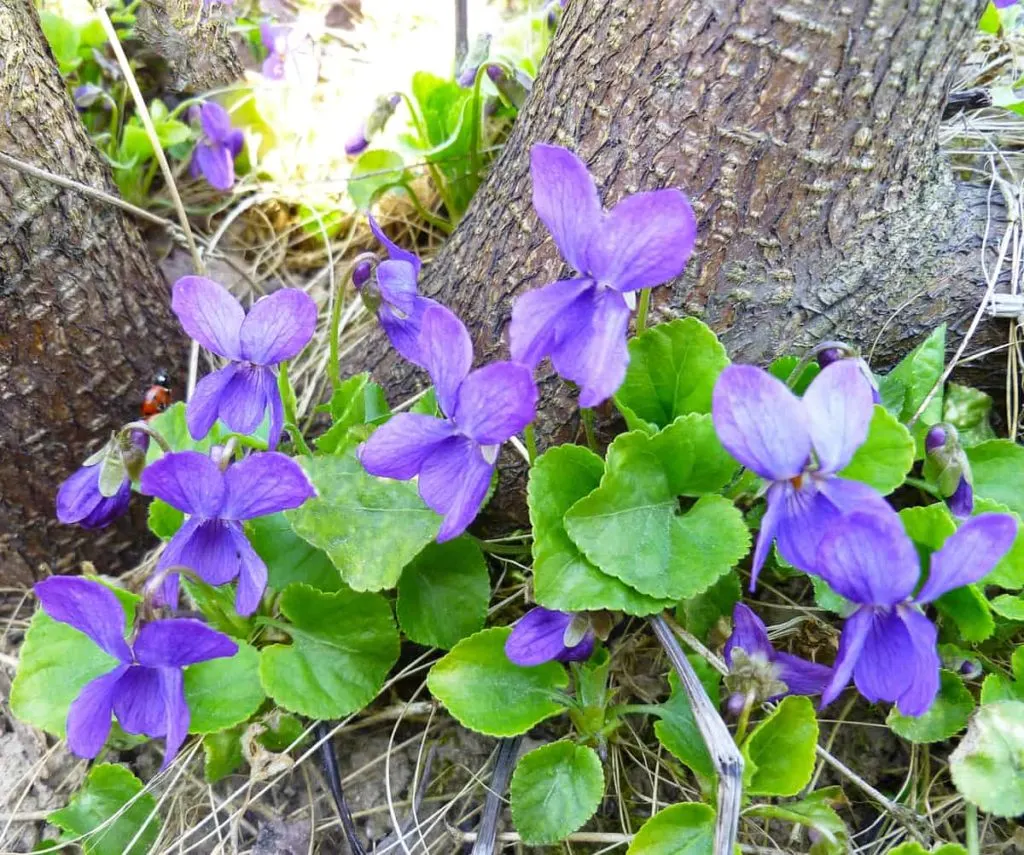
Another idea is to blend complimentary wildflowers together to ensure a succession of bloom times and a variety of textures, forms, and structures.
An example combination could be using bunch berry for spring blooms, false Solomon’s seal for early summer, wood lilies in summer and asters for a spectacular late summer show.
Wildflowers Encourage Wild Things
Growing wildflowers helps us in other ways by encouraging pollinating bees and other beneficial insects to the garden. This helps other native plants and is excellent for fruit and vegetable crops in the vicinity.
Wildflowers for Wildlife
Growing wildflowers that tolerate shade is wonderful for other wildlife as well, helping to provide food and shelter for butterflies, hummingbirds, and other winged friends.
Ways to be Wildly Successful:
- Mimic the wildflower’s natural environment as closely as possible. If the plant is from a moist forest environment, use well-draining soil with a lot of organic matter. If it is from more of a bog environment it may tolerate heavier soils that do not drain well.
- Avoid using chemical fertilizers and soil amendments as wildflowers and native plants tend to be even less tolerant than their more domesticated counterparts.
- In general, many weed species will inhabit disturbed soil. If it is possible, avoid tilling or cultivating the soil very much when growing non-invasive, native plants including many of these wildflowers. Using composts or natural mulches such as wood chips or chopped leaves might be preferable to help feed the soil. Mulches also help retain moisture, always a necessity but particularly important for shade-loving wildflowers.
10 Shade Tolerant Wildflowers
1. Astilbe
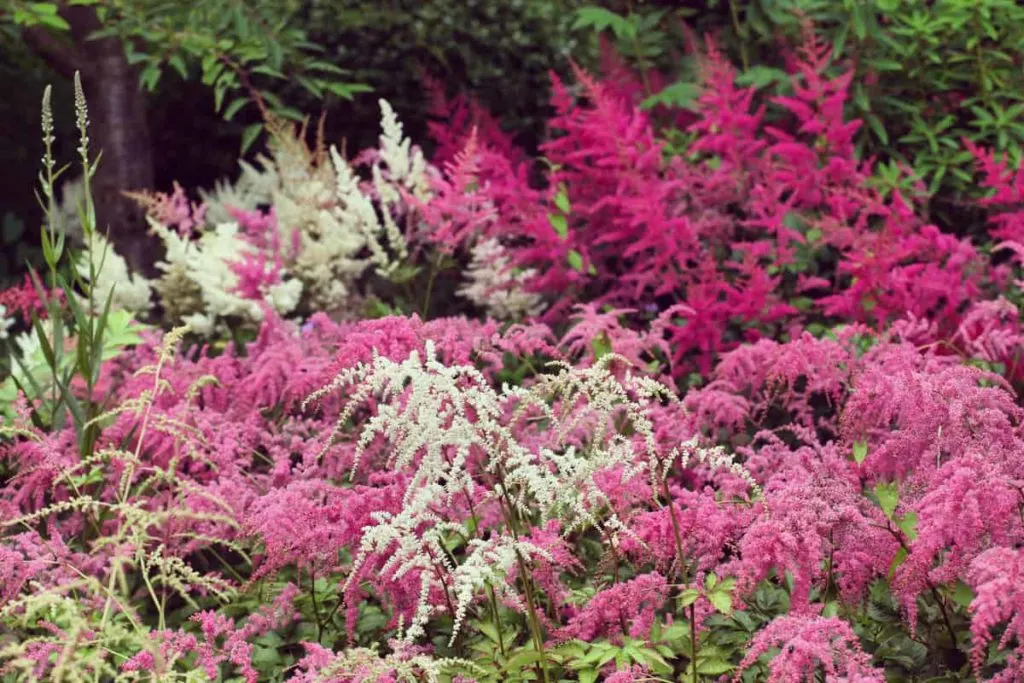
Stand Out Feature: Low-maintenance, colorful, long lasting prolific blooms in shady conditions.
Best Use: Many varieties are available to grow in the shady perennial border or for mass plantings.
Size, Form, Bloom Time, and Growing Habit: Upright growing habit with magenta to pink to white colored, pyramidal flower clusters which rise above lacy, fern-like leaves throughout mid and late summer. Dwarf varieties are only a foot tall and large varieties may grow over 5 feet. Plants can be divided and will naturally spread over an area over time.
Hardiness: Zones 3 to 8.
Natural Environment: Moist clay soils often seen growing abundantly in fields.
2. Blue Wood Aster (Symphyotrichum cordifolium)
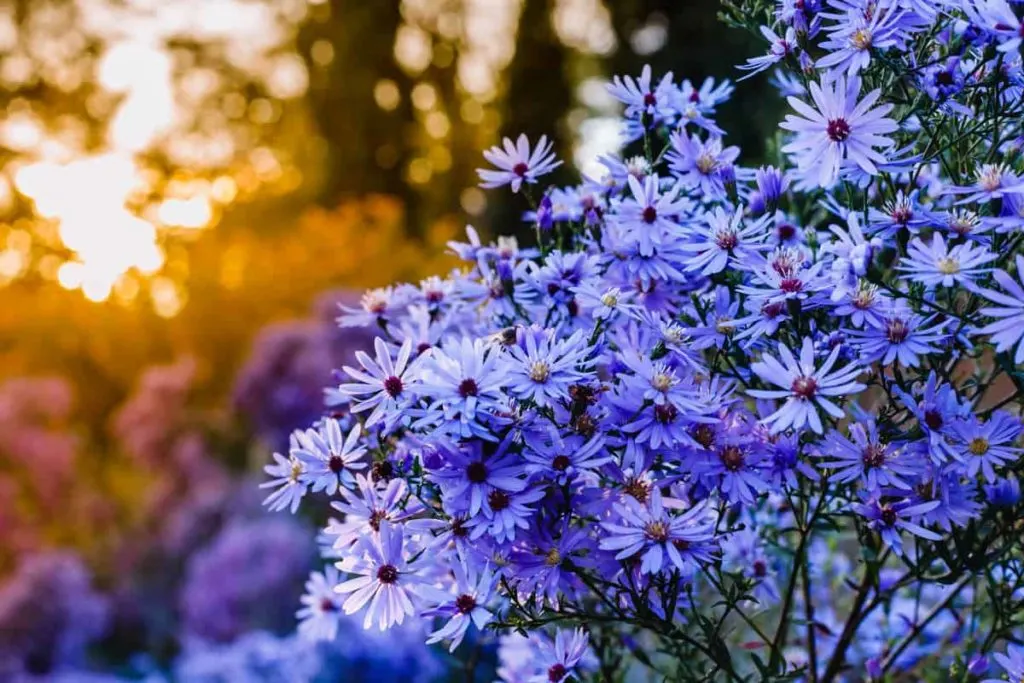
Stand Out Feature: Striking late-season bloomer important for wildlife and pollinating insects.
Best Use: The butterfly garden.
Size, Form, Bloom Time, and Growing Habit: Heart-shaped leaves form a rosette where multiple flowering stalks of lavender blue flower clusters bloom in fall up to 2 feet tall.
Hardiness: Zone 3 to 8.
Natural Environment: A tough perennial that loves the woodland’s edge, thrives in poor soil, and can tolerate disturbed sites that are dry.
3. Purple Coneflower (Echinacea purpurea)
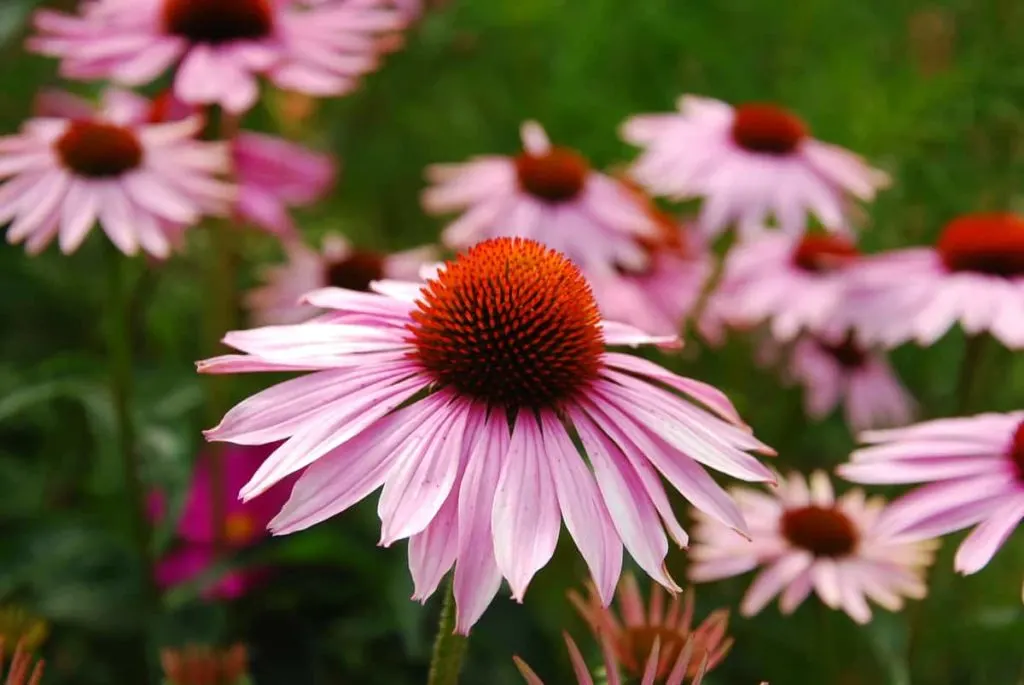
Stand Out Feature: Famous for its herbal medicine uses as tea and immune-boosting supplements.
Best Use: Long-lasting flowering perennial excellent in the butterfly and hummingbird garden and especially beneficial to native bees.
Size, Form, Bloom Time, and Growing Habit: Pink to purple large ray flowers bloom singly atop 2- to 5-foot stems from April to September on clump-forming perennials which can spread over large areas.
Hardiness: Zones 3 to 9.
Natural Environment: Well-drained sandy to rich soils in rocky open woods, thickets, and prairies.
4. Great White Trillium (Trillium grandiflorum)
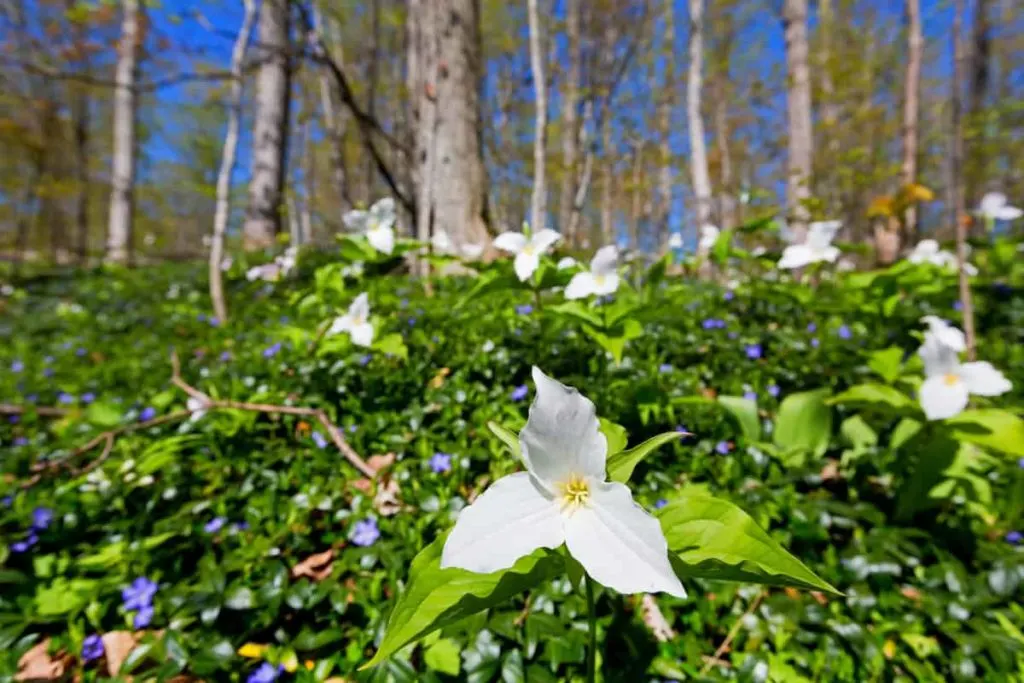
Stand Out Feature: Showy three-petalled, large white flowers.
Best Use: Naturalized garden areas.
Size, Form, Bloom Time, and Growing Habit: Grows 1 ½ feet tall and spreads up to 1 foot, blooming in spring April through June. Will spread slowly if left undisturbed and without competition from invasive species.
Hardiness: Zone 4 to 8.
Natural Environment: Moist well-drained soil rich in humus and organic matter. Ensure regular water.
5. Bunchberry (Cornus canadensis)
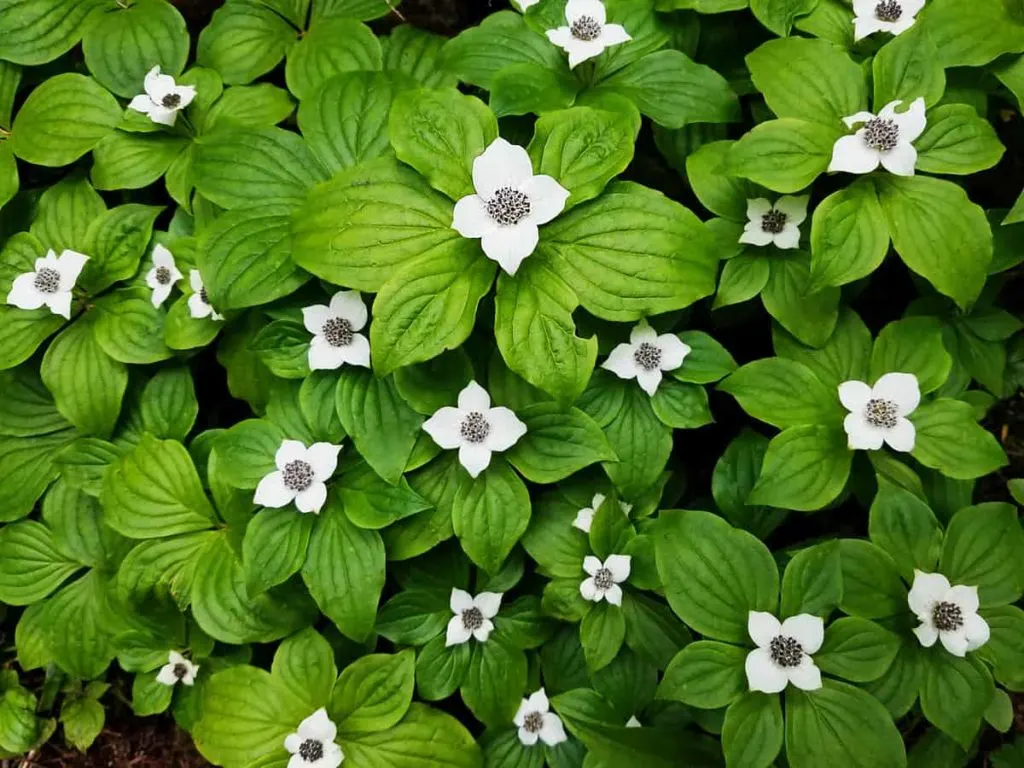
Stand Out Feature: Tiny cluster of flowers surrounded by four white bracts perfectly framed by whorls of green leaves.
Best Use: Naturalized areas bordering forest pathways.
Size, Form, Bloom Time, and Growing Habit: Growing only about 6 inches, these tiny plants spread by seed and underground roots, allowing them to form large colonies on the forest floor.
Hardiness: Zone 2 to 7.
Natural Environment: Cool, damp, acidic soil in coniferous and mixed forests. Mulch with peat moss and pine needles is helpful.
6. Wood Lily (Lilium philadelphicum)
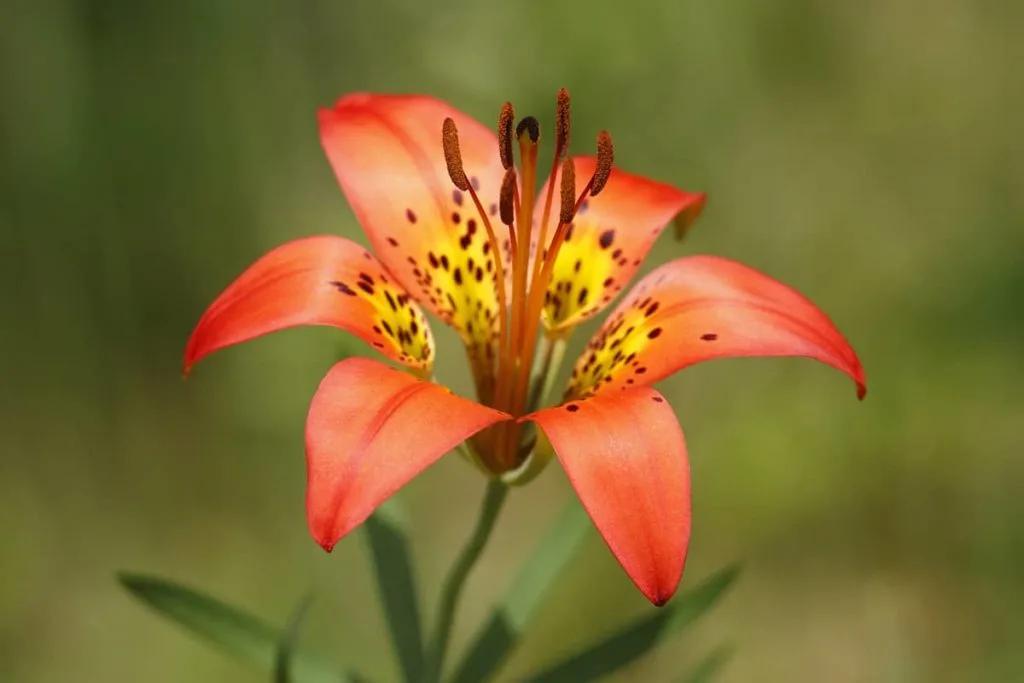
Stand Out Feature: A gorgeous orange lily native to North America that is a favorite of hummingbirds.
Best Use: In specialized plantings and naturalized areas.
Size, Form, Bloom Time, and Growing Habit: 1- to 3-foot stems bear 1 to 4 cup-shaped, yellow-orange spotted flowers through the summer months. They grow from bulbs and spread from seeds. They can create a wonderful sight in a shady meadow when in bloom.
Hardiness: Zones 4 to 8.
Natural Environment: Dry, humus rich, well-draining soils. It has a diverse range from high mountain meadows to grassland prairie.
7. Virginia Bluebells (Mertensia virginica)
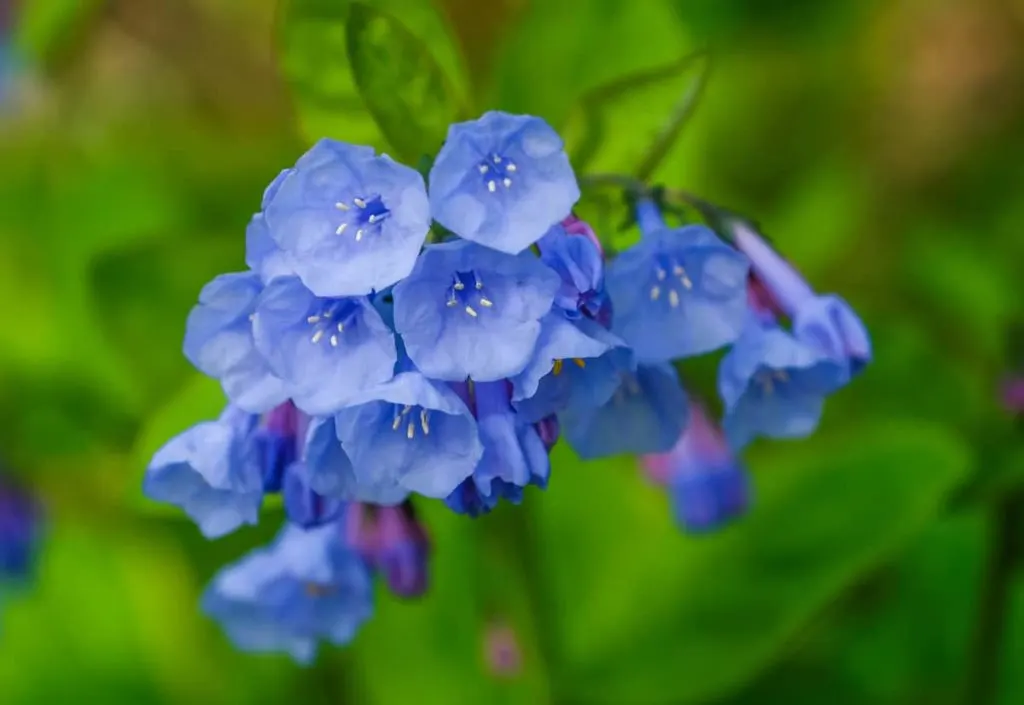
Stand Out Feature: Unique pendulous flowers that emerge pink and change to true blue as they open.
Best Use: Wonderful as an underplanting for shrubs and trees.
Size, Form, Bloom Time, and Growing Habit: Long velvety basal leaves grow flower stalks which hold pendulous flower clusters in spring. The plant goes dormant during summer until they reappear the following spring. They will multiply freely from underground roots and seeds in the right conditions.
Hardiness: Zone 3 to 8.
Natural Environment: Moist woodlands in full to partial shade in soil enriched with lots of organic matter.
8. False Solomon Seal (Maianthemum racemosum)
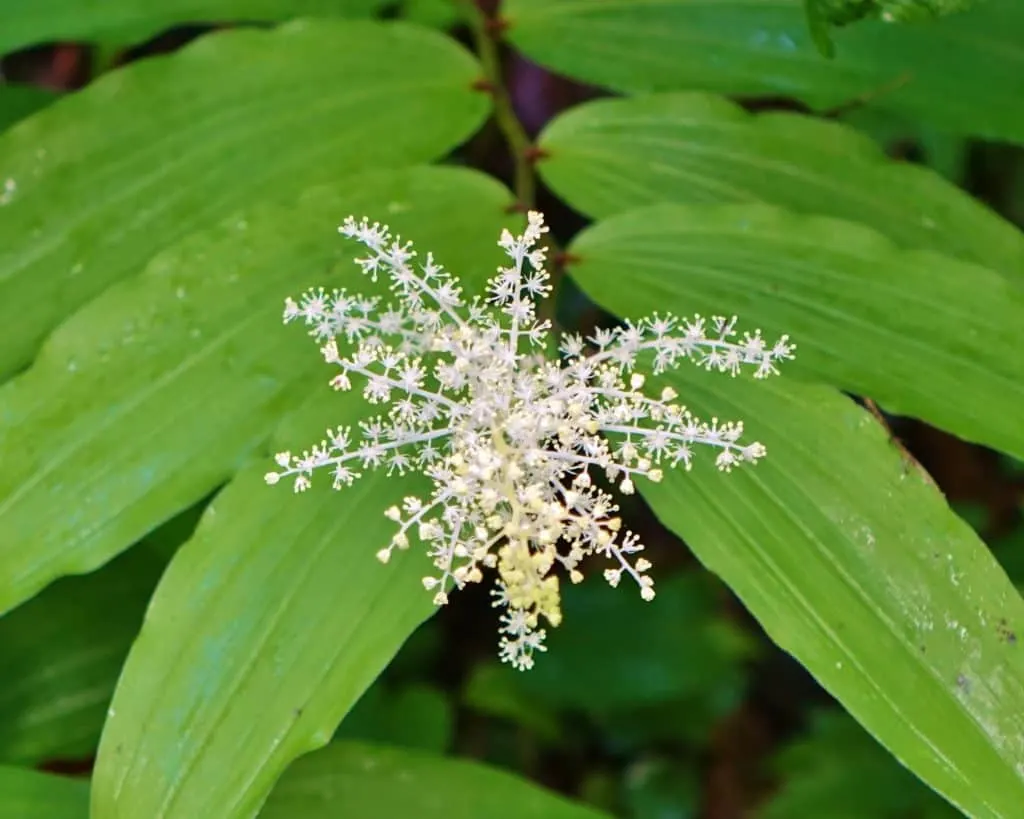
Stand Out Feature: Creamy white feathery blooms which become bright red berries in fall.
Best Use: Woodland wildflower garden in the shade.
Size, Form, Bloom Time, and Growing Habit: Lush plants grow 2 to 3 feet tall with unbranched, arching stems with alternating thick green leaves that terminate in 5- to 10-inch plumes of tiny fragrant flowers in April and May. A colony forming perennial, false Solomon seal spreads by slow-growing, underground rhizomes.
Hardiness: Zones 3 to 8.
Natural Environment: Loose, moist undisturbed soils that are well draining, and humus rich. Plants thrive in the shade and need to be protected from heat.
9. Foxglove (Digitalis purpurea)
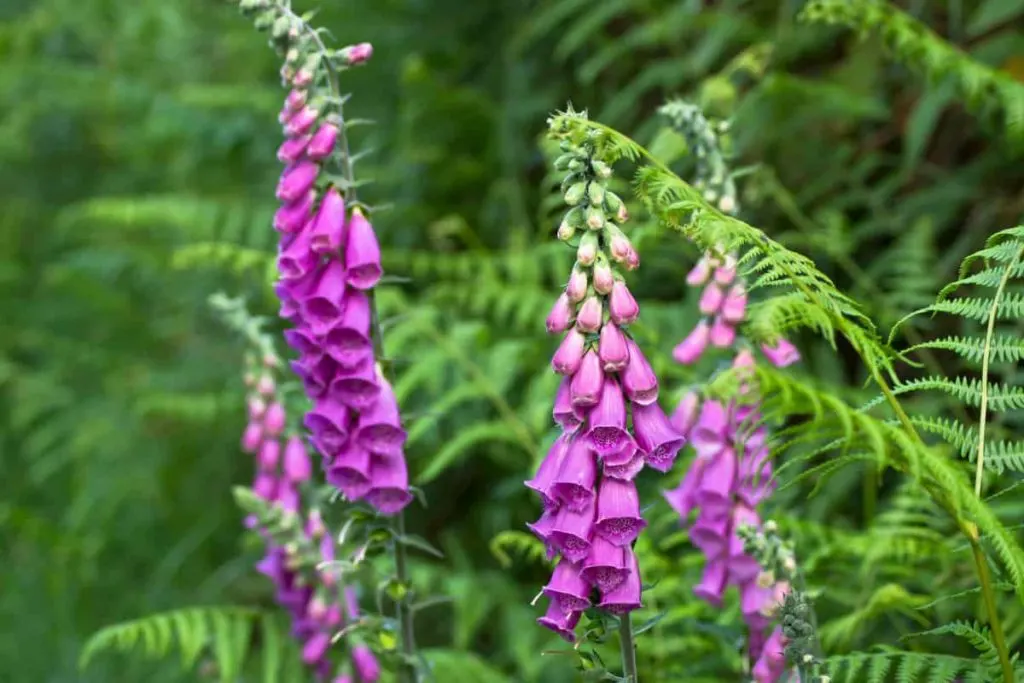
Stand Out Feature: Large flower spikes up to 5 feet tall with large spotted tubular flowers.
Best Use: Showy, hummingbird-attracting specimen or group planting at the back of the border or in naturalized areas.
Size, Form, Bloom Time, and Growing Habit: Easy to grow biennial, blooming in its second year. It will freely spread seed. Plant two years in a row and they will continue to spread their seed and bloom during the late spring. First year is a basal rosette of light green oval leaves. In the second year, the large flower spikes appear. It is worth mentioning that all plant parts are poisonous.
Hardiness: Zones 4 to 8.
Natural Environment: Moist, rich, slightly acidic soils. Prefers to stay evenly moist but well drained. May suffer disease in boggy conditions.
10. Sweet Violet (Viola odorata)
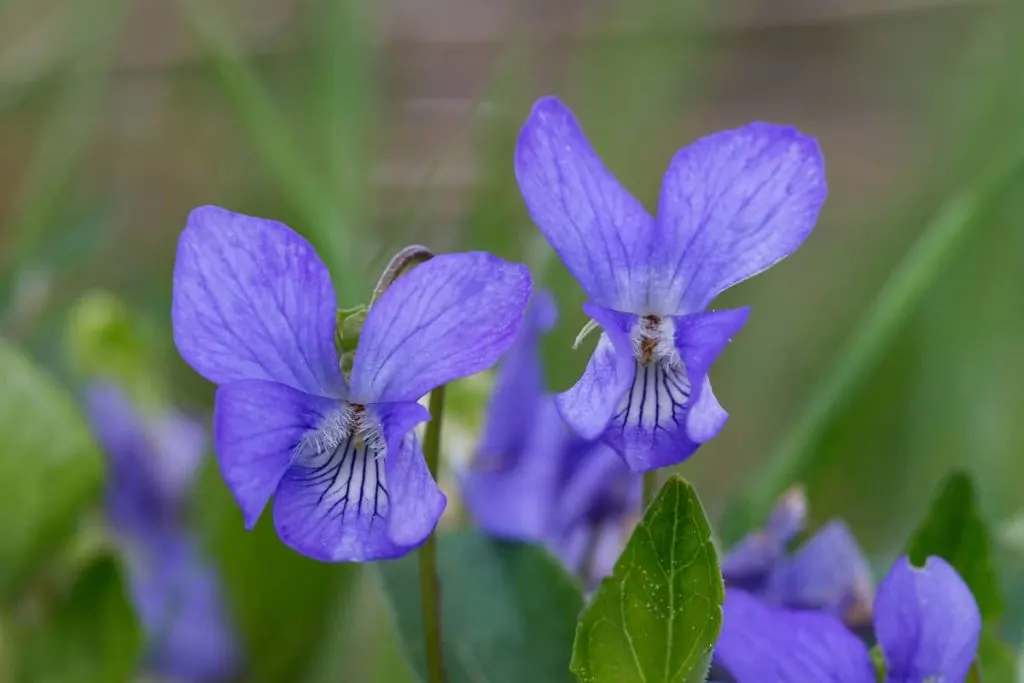
Stand Out Feature: Sweet fragrance known as one of the most beautifully scented flowers.
Best Use: Wildlife garden or nature path border.
Size, Form, Bloom Time, and Growing Habit: Grows only 4 to 6 inches tall and wide, this tiny perennial groundcover bears comparatively large ½ inch blue/purple flowers which are solitary rising above a basal rosette of smooth, heart-shaped green leaves. Spreads by seeds or above ground stolons creating colonies.
Hardiness: Zones 4 to 9.
Natural Environment: A European arrival to North America, sweet violet has naturalized in shady, mossy, moist places.
With this list as a starting point, this is a planting for a shade garden to melt into the wild areas bordering the backyard. Here we have a good spectrum of full season color progression and low, medium, and tall growing wildflowers with a variety of interesting forms that will invite wild things and winged friends for even more enjoyment in the shade.
